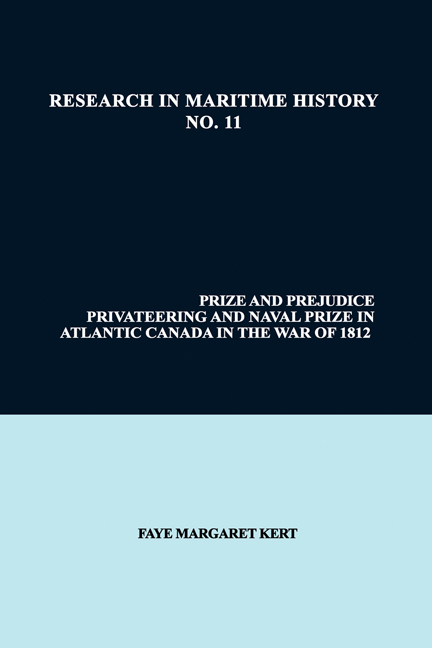Book contents
- Frontmatter
- Table of Contents
- Tables
- Illustrations
- Acknowledgements
- Introduction
- Chapter 1 Reluctant Enemies
- Chapter 2 Good and Lawful Prize
- Chapter 3 Prizemaking and the Vice-Admiralty Court at Halifax
- Chapter 4 Public Service, Private Profits
- Chapter 5 On His Majesty's Service
- Chapter 6 The Fortunes of War
- Conclusion: Prizemaking Appraised
- Appendices
- Appendix 1 Prize Cases Appearing before the Vice-Admiralty Court of Halifax from June 1812 to May 1815
- Appendix 2 Standing Interrogatories
- Appendix 3 Nova Scotia and New Brunswick Letter of Marque Vessels, 1812-1815
- Appendix 4 Investment in Privateering
- Appendix 5 Royal Navy Vessels and Their Prizes
- Appendix 6 Letters of Agency - RN Ships
- Appendix 7 Prize-Related Activity Among Merchants in Nova Scotia and New Brunswick
- Bibliography
Appendix 2 - Standing Interrogatories
from Appendices
- Frontmatter
- Table of Contents
- Tables
- Illustrations
- Acknowledgements
- Introduction
- Chapter 1 Reluctant Enemies
- Chapter 2 Good and Lawful Prize
- Chapter 3 Prizemaking and the Vice-Admiralty Court at Halifax
- Chapter 4 Public Service, Private Profits
- Chapter 5 On His Majesty's Service
- Chapter 6 The Fortunes of War
- Conclusion: Prizemaking Appraised
- Appendices
- Appendix 1 Prize Cases Appearing before the Vice-Admiralty Court of Halifax from June 1812 to May 1815
- Appendix 2 Standing Interrogatories
- Appendix 3 Nova Scotia and New Brunswick Letter of Marque Vessels, 1812-1815
- Appendix 4 Investment in Privateering
- Appendix 5 Royal Navy Vessels and Their Prizes
- Appendix 6 Letters of Agency - RN Ships
- Appendix 7 Prize-Related Activity Among Merchants in Nova Scotia and New Brunswick
- Bibliography
Summary
Eighteenth-eentury efforts to regularize the adjudication of prize led the British Admiralty Court to develop standardized questions for members of captured crews. Known as the Standing Interrogatories, these questions elicited detailed information on the act of capture, the vessel and cargo seized, the behaviour of the prize maker, any extenuating circumstances (such as a licence), and whatever other shipping intelligence the subject could contribute.
By the War of 1812, colonial prize courts had adopted a fairly elaborate list of thirty-four questions that were put to one or more representative crew members from every prize. In the documents of the Vice-Admiralty Court of Halifax, 443 cases, or 62 percent of files contain at least one and as many as seven responses to the Standing Interrogatories. Sworn under oath, the information gathered from these documents provides a profile of American and foreign shipping along the eastern coast of North America during the War of 1812 and a testament to the activities of prizemakers, whether navy or provincial privateers.
Dr. Christopher Robinson recorded the following list of questions in 1812 and it was published subsequently in the legal series, English Reports, Vol. 165. They are described as:
STANDING INTERROGATORIES, to be administered on behalf of Our Sovereign Lord George the Third by the grace of God, of Great Britain, France and Ireland, King, Defender of the Faith. To all commanders, masters, officers, mariners, and other persons found on board any ships and vessels, which have been or shall be seized or taken as prize by any of His Majesty's ships or vessels of war, or by merchants ships or vessels which have or shall have commissions or letters of marque and reprisals, concerning such captured ships, vessels, or any goods, wares, and merchandise on board the same, examined as witnesses in preparatory, during the present hostilities.
- Type
- Chapter
- Information
- Prize and PrejudicePrivateering and Naval Prize in Atlantic Canada in the War of 1812, pp. 204 - 210Publisher: Liverpool University PressPrint publication year: 1997

